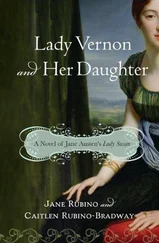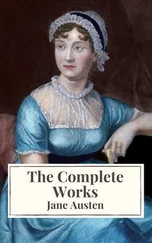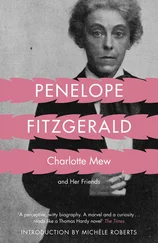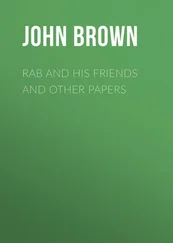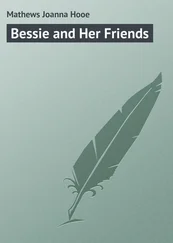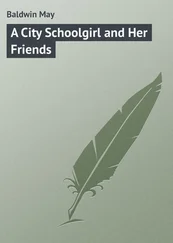Margaret Walker - Lady Hollyhock and her Friends
Здесь есть возможность читать онлайн «Margaret Walker - Lady Hollyhock and her Friends» — ознакомительный отрывок электронной книги совершенно бесплатно, а после прочтения отрывка купить полную версию. В некоторых случаях можно слушать аудио, скачать через торрент в формате fb2 и присутствует краткое содержание. Жанр: Хобби и ремесла, foreign_home, на английском языке. Описание произведения, (предисловие) а так же отзывы посетителей доступны на портале библиотеки ЛибКат.
- Название:Lady Hollyhock and her Friends
- Автор:
- Жанр:
- Год:неизвестен
- ISBN:нет данных
- Рейтинг книги:5 / 5. Голосов: 1
-
Избранное:Добавить в избранное
- Отзывы:
-
Ваша оценка:
- 100
- 1
- 2
- 3
- 4
- 5
Lady Hollyhock and her Friends: краткое содержание, описание и аннотация
Предлагаем к чтению аннотацию, описание, краткое содержание или предисловие (зависит от того, что написал сам автор книги «Lady Hollyhock and her Friends»). Если вы не нашли необходимую информацию о книге — напишите в комментариях, мы постараемся отыскать её.
Lady Hollyhock and her Friends — читать онлайн ознакомительный отрывок
Ниже представлен текст книги, разбитый по страницам. Система сохранения места последней прочитанной страницы, позволяет с удобством читать онлайн бесплатно книгу «Lady Hollyhock and her Friends», без необходимости каждый раз заново искать на чём Вы остановились. Поставьте закладку, и сможете в любой момент перейти на страницу, на которой закончили чтение.
Интервал:
Закладка:
Margaret Coulson Walker
Lady Hollyhock and her Friends / A Book of Nature Dolls and Others
To My Mother
Who has always known how to help little people enjoy themselves
O the fluttering and the pattering of the green things growing,
How they talk each to each, when none of us are knowing;
In the wonderful light of the weird moonlight
Or the dim, dreamy dawn when the cocks are crowing.
I love, I love them so—my green things growing,
And I think that they love me, without false showing,
For by many a tender touch they comfort me so much
With the soft mute comfort of green things growing.
Foreword
THIS book has a purpose beyond that of mere amusement. Its aim is to aid parents in furnishing not only entertainment but profitable employment as well, for their little ones—profitable, in that work under the guise of play, makes for character. The value of the things made is not in their finish, but in the training which they afford—a value ethical rather than intrinsic.
Children throw aside as uninteresting the finished toys from the shops when they have once learned to make playthings for themselves. To an imaginative child the possibilities of green things growing, of other materials provided by the changing seasons, and of the apparently useless trifles to be found in any home, are endless, and far surpass in permanent interest the realm of magic. In giving tangible form to the creatures imagined, thought is ripened into action and childhood’s natural desire for expressed imagery satisfied.
In making use of these apparently inappropriate materials in the construction of their own toys resourcefulness is engendered, practical intelligence stimulated, the inventive faculty cultivated, sympathetic acquaintance with nature broadened, and manual dexterity increased—all of which will later in life prove of inestimable value.
Then, too, such employment strengthens, or in some instances, creates the ability to get pure enjoyment out of the near at hand little things, which makes for permanent happiness.
The whole nature of a child cries out for self activity. Producing by his own efforts something that satisfies his own needs gives him the keenest possible pleasure, and puts into him that energy which results in love of work.
There is no more interesting study for grown ups than that of children at play with dolls and animals of their own making. The more imaginative children prefer the flower dolls which fade or die quickly and then go to take their places in the sky to which they give the beautiful colors on sunset evenings. Others, natural little gad-a-bouts, always play “come to see,” while in some practical little souls the spirit of motherhood is so strong that, to them, every doll is a baby doll, and everything they play with, from a clothes-pin to a poker, must be mothered—sung to and cared for, petted and rocked.
Boys, with their more belligerent tastes, prefer to make Indians and soldiers out of the same materials that their sisters would convert into the most peaceful of citizens. Those in whom the sense of humor is strong make every face a comic one, while others put into the faces drawn by them the demure, trivial, or rugged features and expressions harmonizing with their ideas.
An effort has been made to furnish in these pages suggestions for all sorts and conditions of children. The songs and jingles are for those who like to make rhymes, or to sing about everything that they do.
Only a few of the dolls and animals children can make for themselves have been suggested. The possibilities of the subject are by no means exhausted.
Margaret Coulson Walker.Des Moines, Iowa.
Lady Hollyhock and Her Daughter
Hollyhock Place was as beautiful a spot as children ever had for a home. Hollyhocks were blooming everywhere. All about the house and along the lane leading to it were great stalks bearing satiny blossoms of all shades, from delicate shell pink to the deepest, richest red. Besides, there were countless white and golden yellow ones.
When the little Wests came to live there it seemed like fairy land to them. All their lives they had lived in the city with its severe looking houses and hard brick and stone pavements. There their playthings, even, were made of wood and china and tin—all ready made and finished.
Here everything was so different. There were flowers and vines everywhere about their cottage home, shading the windows and trailing over the fences. In the garden at the back were beds of tender radishes and rows of tomatoes, cabbages, potatoes, corn and other vegetables, while over the fence grew vines bearing green and yellow gourds.
In the city the children had never seen these things growing; here they could not only see them, but could help them to grow, by watering them and stirring up the ground about their roots. And afterwards, they could have them for their very own. It was just the place to be perfectly happy in.
Cousin Charlotte was to live with them. She was fifteen and knew how to do many things to help children enjoy themselves. The little Wests thought it was because she had always lived in the beautiful country. Perhaps it was.
She knew how to make the most wonderful dolls out of almost anything and could make rhymes and stories about them. The first doll she made for them Eugenie had named Lady Hollyhock. Eugenie had always liked stories of lords and ladies and knights and other great folk so the others were not at all surprised that their new visitor was a Lady.
A most wonderful lady she was with the daintiest of satiny gowns of the most beautiful shade of pink. In her hair—or on her head—she wore a bow of green, while round her neck was a great pointed green collar such as Queen Elizabeth might have envied. The pink and green were wonderfully becoming, for, being a lady of high degree and having excellent taste, she was careful in choosing colors which not only harmonized with each other, but with her complexion.
Lady Hollyhock’s complexion was a marvel—different from anything the children had ever seen in that line,—being a peculiar light shade of green. This was not to be wondered at though, when you know that Lady Hollyhock’s head was nothing but a green tomato, her body another, the green bow in her hair the stem and calyx of the tomato, and her collar the fuzzy double calyx of a hollyhock. Her gown—waist, sleeves and skirt—was of the beautiful flower cups of hollyhocks tied in at the waist by a long blade of grass.
Her piercing black eyes were glass headed pins, her nose a bit of a match, and her pearly teeth white headed pins. Tooth picks served for neck, arms and legs. Of these last it took three to support so great a personage.
The daughter of this noble lady looked much like her mother though she was dressed somewhat differently. The face was the same but the cap and gown were just a little different. There was no sash about the waist of the daughter—her gown hung loose from the shoulders making her look younger. Having but one leg, this strange child was always compelled to stand with that in a slice of potato to keep from tumbling over.
After a time other members of the family joined these two—some wore gowns of red, some of white, and some of yellow, but none were more charming than the first Lady Hollyhock and her daughter.
The Cucumbers
During the summer and the winter following many friends visited with Lady Hollyhock and her family.
From Cucumber Hill came a most dignified Englishman. At a glance one knew him to be English for he wore a single eyeglass. A large brass headed furniture tack occupied the place of one eye while the other was filled by a small black carpet tack. Though a trifle stiff in his manners, this gentleman always wore an agreeable smile.
Читать дальшеИнтервал:
Закладка:
Похожие книги на «Lady Hollyhock and her Friends»
Представляем Вашему вниманию похожие книги на «Lady Hollyhock and her Friends» списком для выбора. Мы отобрали схожую по названию и смыслу литературу в надежде предоставить читателям больше вариантов отыскать новые, интересные, ещё непрочитанные произведения.
Обсуждение, отзывы о книге «Lady Hollyhock and her Friends» и просто собственные мнения читателей. Оставьте ваши комментарии, напишите, что Вы думаете о произведении, его смысле или главных героях. Укажите что конкретно понравилось, а что нет, и почему Вы так считаете.


